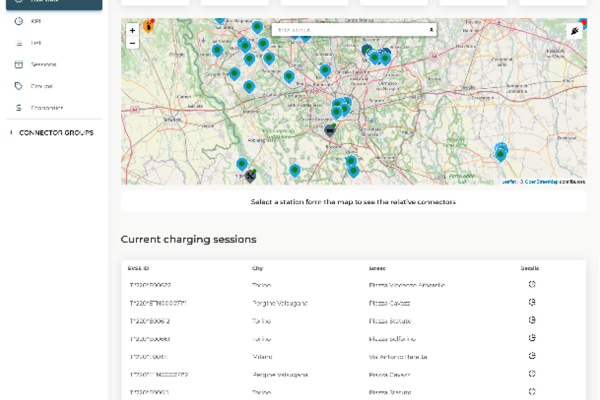As a fleet manager, it’s your duty to care for the health and safety of your drivers, vehicles, and assets. Making sure all staff members conduct their activity in a safe environment and are equipped with the right knowledge and tools to keep them out of harm’s way is a crucial requirement for all businesses that operate fleets, regardless of their size.
Unfortunately, fleet drivers are exposed to a series of risks on a daily basis, which makes fleet safety not only a very necessary task but also a very challenging one to accomplish. Statistics also back up this statement, showing that in Britain, at least one in three (30%) fatal traffic accidents and one in four (26%) crashes resulting in serious injuries involve a person driving for work. The simple explanation for these figures is that while the average driver in the UK travels around 7,500 miles every year, the distance covered by fleet drivers annually for work purposes often exceeds 18,000 miles, which translates into a much higher risk of accidents for them.
Accidents involving fleet drivers are not only extremely costly for the company, but they can severely impact the life of your employees and damage brand reputation. It’s in your own best interest to find solutions and implement measures to avoid any of these scenarios.
Bottom line is, fleet safety should be high on your list of priorities. However, ensuring the safety of your fleet is not a one-time job, but an ongoing task that can help you tackle risks and hazards effectively. For this reason, it’s extremely important to know how to approach safety issues in the long run and this short guide can help you identify the best practices in this respect.
Create a safety policy
As experts at Personal Injury Claims Care explain, all road users are expected to comply with the guidelines and rules set out in the Highway Code and the Road Traffic Act 1988, in order to keep themselves and everyone around them safe. Everyone should do their best to be considerate while on the road and avoid creating risky situations.
However, if you want to be sure that your fleet drivers are safe and don’t pose a risk to themselves or other road users you should go beyond what is written in the law. Relying on them respecting traffic laws and regulations might not be enough to avoid all potential hazards.
Having a safety policy in place can help you tackle most of the risks and hazards your fleet drivers deal with. The policy should contain all the rules and measures implemented for safety reasons, as well the consequences drivers may face for not complying with them. You also have to make sure all drivers have read and understood the policy and agree with the provisions.
Implement safety training and awareness programs
It’s easy to assume that your drivers already have the skills and knowledge they need to stay safe when they’re behind the wheel, but there’s always room for improvement. Fleet drivers can use special training classes to enhance driving skills and learn how to avoid dangers while out on the road.
The good news is there are a lot of pre-made training and awareness courses out there, for all types of fleets, so it’s not difficult to find one that’s right for your fleet. Just remember to take your drivers’ needs into consideration when choosing a training program to make sure they’re actually going to benefit from it and it’s not going to be a waste of time and money.
Choose the right vehicles
The human factor plays a big role in ensuring safety, but let’s not forget about the technical aspects either. You can teach your drivers about safety and have them follow all the rules and regulations that would protect them and your assets, but if you really want to cover all the bases, you also have to think about the vehicles they’re driving.
In other words, you have to choose vehicles with high safety ratings to build your fleet. If your technical knowledge of cars is limited, you might want to consult with a specialist before deciding which cars you should purchase or lease.
Preventive maintenance
Apart from choosing the right vehicles for your fleet, you also have to focus on keeping them in optimum condition. Even if your vehicles have high safety ratings and a plethora of safety features to make drivers feel more at ease, keep in mind that they’re subject to wear and tear, and functionality issues can arise at any moment.
This stresses the importance of prioritizing preventive maintenance for all fleet vehicles, regardless of their age and history. It’s always best to prevent than treat, and vehicle care makes no exception. This way, you’ll be able to prevent issues before they happen and avoid possibly dangerous situations. Apart from helping you save money on costly repairs, preventive maintenance also ensures your vehicles are road-ready and your drivers are protected at all times.
Offer rewards for safe driving behavior
You’ve made sure that your drivers are up to date with the rules and safety measures they should follow, now it’s time to encourage them to embrace these protocols. You’ll have far better chances of instilling a safety culture among your drivers if you give them something to motivate them. That’s what reward systems are made for.
Drivers that demonstrate safe driving behavior and have a clean accident record should be rewarded for their performances. It’s up to you to decide what the rewards should consist of, but bonus checks and gift cards are usually a good idea.
Make use of vehicle safety technology
Technology has made our lives a lot easier, but also safer, and the automotive industry is a good example of that. There are numerous tech tools and devices that can help fleet managers monitor drivers’ behavior, track fleet vehicles, and use the data they collect to make more informed decisions and enhance fleet safety. Therefore, investing in the right tech equipment can make a visible difference in the safety and performance of your fleet.








